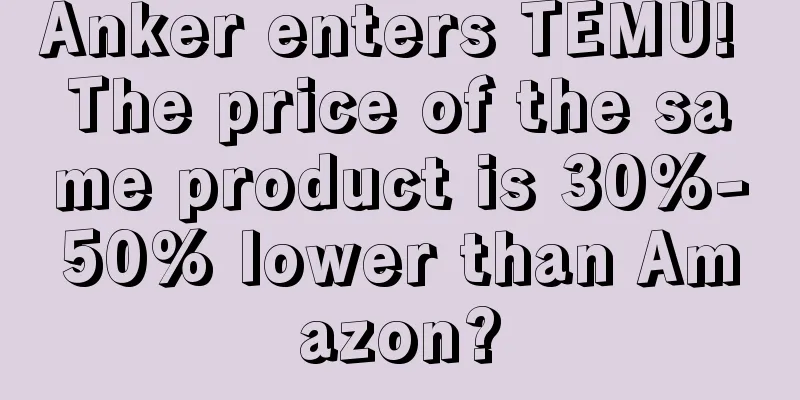Anker enters TEMU! The price of the same product is 30%-50% lower than Amazon?

|
This week, many sellers have been researching a product of Anker in Temu half-custody, and have been discussing why Anker, as the Amazon barley, wants to enter the TEMU half-custody market?
The same product is 30%-50% cheaper on TEMU than on AmazonAnker's soundcore brand headphone sells for US$79.99 on Amazon, but sells for US$55.99 on Temu, which is equivalent to a 20% discount after deducting the commission. TEMU's semi-hosted price is much lower than Amazon's price, so why is it not dropped from Amazon's shopping cart?
Temu platform fully managed sellers are about to take offRecently, there have been new opportunities on Temu. Major organizational adjustments have been made within the platform. Investment promotion has been divided into categories, and a group of half-trust backbones have returned to full-trust.
|
<<: Sellers beware! ! The "refund only" policy for European sites will be implemented soon
>>: Amazon has perfected several features!
Recommend
US holiday sales may be sluggish! Walmart cuts peak season hiring!
<span data-docs-delta="[[20,"获悉,据外媒路透社报道,在...
Costco's revenue and profit in Q3 exceeded expectations! Official announcement: Membership fees will not increase for now!
<span data-shimo-docs="[[20,"获悉,Costco公布截止...
Amazon Black Friday News! Accidental errors on flash sales and exclusive deals pages
Today is the official start of Black Friday in the...
Effectively manage inventory! International luxury e-commerce Farfetch launches pre-order service!
It is learned that the international luxury e-comm...
What is Super Intellectual Property? Super Intellectual Property Review
Founded in 2002, Chofn Intellectual Property Servi...
Sold out! Sales of these categories have increased significantly during the epidemic
Due to the impact of the epidemic, consumption tre...
What is BuckyDrop? BuckyDrop Review
BuckyDrop is a brand under the STARIT Group that p...
Don’t rush to change the title! Amazon’s policy has been updated again!
Today is the 22nd, and a title policy change that...
Taobao's cross-border sales surged 500 times! Amazon's listings have new rules
Latest news: Taobao’s overseas expansion plan upgr...
What is Storr? Storr Review
Storr allows users to shop directly from the socia...
What is Offers.com? Offers.com Review
Offers.com is an online platform that enables cons...
What is FPX? FPX Review
FPX is a convenient and secure online payment solu...
Critical attacks continue! Amazon FBA announces suspension of removal operations!
“Not only do we have no orders, but we also lose r...
Started a business together, but a white lotus girl appeared halfway, and Z's masculinity collapsed! Sellers on the Japanese site, please pay attention!
Today we share the stories and experiences of two...
What is testbuy? Testbuy review
Simply put, it is to purchase products through sho...









